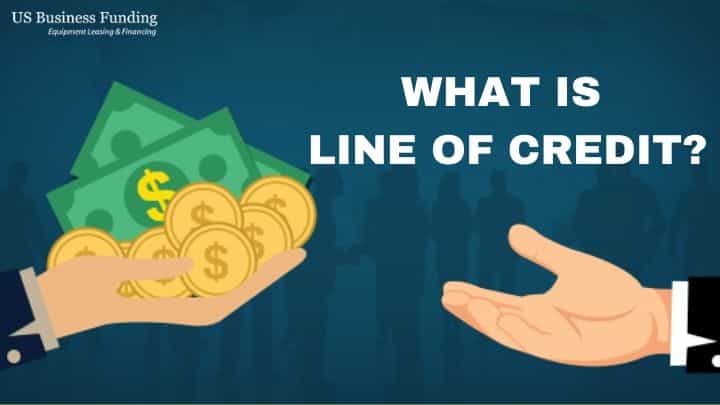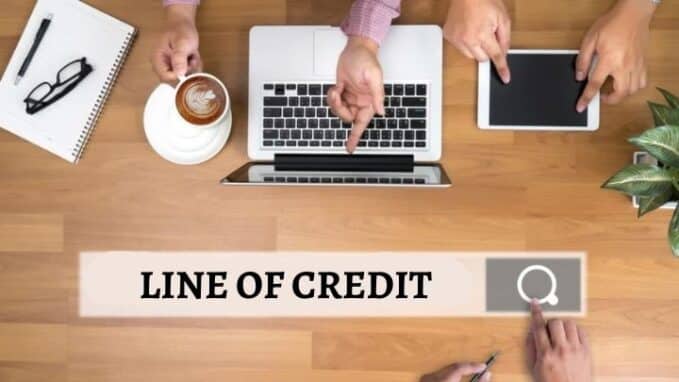What is the line of credit?
Posted on: April 27, 2022 | Category: Business Credit

A personal line of credit, in an idealistic situation, is a bank or credit union loan that sits in the backdrop of your bigger financial plan.
Indeed, it is in a ready-to-use state when unexpected expenses happen that your budget isn’t prepared to address. A personal line of credit is similar to a credit card in a multitude of ways.
- Ability to borrow a certain lump sum amount against your secured lines.
- You are free to use the available credit for whatever you choose.
- You are free to use the trigger whenever you choose.
- When you pay off the balance, the loan amount becomes available to borrow against again.
Personal lines of credit can prove to be helpful in a variety of situations. You can borrow against your credit limit in any maximum amount you require.
You also only pay interest on the outstanding debt, not the whole loan amount.
Lines of Credit – A Type of Personal Loans
However, personal lines of credit, like any other type of personal loans, come with risks. Financial and human hardships can result from poor management of the line of credit. Also, don’t just borrow against your loan because you have the option.
Pay attention to your budget; if your income is consistent and stable, resist the need to use your credit line to pay your monthly expenditures. When people are in need of money, getting a personal credit line as an unsecured personal line is generally the last thing on their minds. Going to a bank, credit unions or credit card companies for a traditional loan, using credit cards, or borrowing from friends and family as personal loans are the first things that people consider.
Many businesses are using credit for decades to cover working capital needs. Indeed, they also use it to take advantage of strategic investment opportunities.
However, the credit line hasn’t caught on with individuals. This could be possible because banks rarely promote lines of credit, and potential borrowers don’t look forward to checking accounts.
A home equity line of credit is the sole credit line that people may use. Here is a complete guide on to know about the line of credit and how one can use it to the fullest for their benefit.
What Is a Line of Credit (LOC)?

A line of credit is a flexible type of loan with a revolving credit type facility. Generally, any bank or financial institution offers a line of credit. The functioning of the line of credit is similar to that of a credit card that you get from credit unions. It is a certain amount of money that you can use as needed and then pay back immediately or over a set period of time.
Importantly, you should know that it has a variable interest rate. Thus, it’s difficult to estimate how much money you borrow will cost you in the long run.
A line of credit is a sort of standing loan that allows people, corporations, and other organisations to borrow money as a cash advance when they need it, pay it back, and keep borrowing without having to apply for another loan. The line of credit is often described as an “evergreen loan.”
The Risk Factor:
Although lines of credit are less problematic than credit card loans, they nevertheless make earning asset management more difficult for banks. The reason behind this is that the outstanding balance is difficult to oversee once the line of credit has been approved. They resolve the issue that most banks are unwilling to underwrite one-time personal loans, especially unsecured loans, for most customers.
Similarly, taking out personal loans every month or two, repaying it, and then borrowing again is not cost-effective. The line of credit addresses both of these difficulties, which make a specific amount of money available if and when the borrower requires it.
When does a Line of Credit come in handy?
The structure and overall working of lines of credit is not meant to finance one-time purchases like houses or cars. Though you can use credit lines to purchase products for which a bank would not ordinarily provide a loan. The typical use of individual lines of credit is the same as that of business lines of credit.
- To level out the peaks and valleys of monthly income and expenses that are subject to change and fluctuate.
- To fund initiatives where determining the exact amount of money required in advance may be difficult.
- In case of an emergency, such as when your tax bill arrives at the same time as your credit card bills and your child’s college tuition is due. Leverage the line of credit funds to consolidate your debt.
- To avoid an overdraft. A line of credit can serve as a backup should you require overdraft protection if you are a frequent check writer with fluctuating revenue.
- If you wish to establish a business or grow it by advertising, marketing, or attending trade exhibits, use the line of credit as collateral.
In brief, lines of credit can be useful in cases where recurring financial outlays are anticipated but the amounts are uncertain ahead of time and/or the vendors do not accept credit cards, as well as circumstances necessitating large cash deposits.
Likewise, amid the housing boom, home remodeling and restoration projects were widely financed through lines of credit. People normally use a mortgage to purchase a home. Whereas, line of credit helps to fund any modifications or repairs.
Pros of Line of Credit:
1) Immediate access to funds:
Individuals and businesses can get access to available credit when they need it. A personal credit line might be useful for something as easy as overdraft protection on a bank account.
2) Borrow what you require:
The borrower need not take the entire lump sum amount in a single go. Rather, you can borrow exactly as much as you need.
3) Interest-only payments throughout the draw period:
If you have a loan with a draw term, you can fund large projects without worrying about having to start paying it as a minimum monthly payment. This can be a good way to pay for a home remodel before you put your house on the market, for instance.
4) Continual borrowing facility as needed:
Instead of taking out a one-time loan and then requesting for another when it’s paid off, you can keep borrowing and repaying when you need more money.
Challenges & Problems Associated with the Line of Credit:
Personal lines of credit, whether they are secured lines or unsecured lines, have the power to be both useful and hazardous. Investors who acquire a line of credit must pay it back. Pay special attention to the terms of these repayments, which are written out at the time the line of credit is first provided. Accordingly, a credit check process is in place, and would-be borrowers with poor credit tend to find it more difficult for getting accepted.
The credit line is hardly free money. These unsecured credit lines are unquestionably less expensive than traditional loans. They are also frequently less expensive than credit cards. However, they are more expensive than standard secured loans like mortgages and car loans. The interest on a line of credit is normally not tax-deductible.
The lenders also charge an annual fee for maintenance if you do not use the credit line funds. Furthermore, as soon as you borrow the money, you have to pay interest that begins to accrue.
Also, some borrowers may perceive the interest calculations for credit lines to be more confusing. This is because the borrower can draw and repay the funds in an unscheduled manner. Correspondingly, the amount of interest they wind up paying may be a shocker for some of the borrowers.
Some of the cons associated with line of credit are as under:
1) Can jeopardize assets:
If you default on a secured line of credit, such as a HELOC, your every personal asset may be at risk. Your property, company assets, residence, or other collateral may be seized by lenders.
2) Higher rate of interest:
Compared to a standard loan, a credit line often has a substantially higher interest rate.
3) Interest builds up:
If you don’t pay off your loan’s principal amount, interest payments will continue to accrue. There are chances that you end up paying way more than the original credit line amount.
4) Credit lines, like any other form of borrowing, include financial hazards:
You may end up in serious debt if you count on them without being capable of repaying the money you borrow within the repayment period.
5) Unforeseen changes:
At any point, the bank or the financial institution that issued the line of credit might terminate it, cut the credit limit, or modify the rate.
How Does a Line of Credit Work?
A line of credit works in the same way that a combination of a personal loan and a credit card does. The user can withdraw money from his bank account as and when he wants. The borrower is not obliged to utilize the line. Certainly, you will only be charged for the lines that you use.
The line of credit interest rates are often lower than credit card interest rates, but higher than personal loan interest rates. Setting up a credit line can be a helpful technique for dealing with unanticipated expenses that surpass your emergency funds or other resources because you only pay interest if you use it.
However, the line of credit lacks the convenience of a credit card, such as the ability to transact and flexible payback options. Personal lines of credit have set durations, covering two separate periods, each spanning three to five years:
Draw Period:
Easily borrow and repay the money against the credit line throughout the initial draw period.
Repayment Period:
You won’t be able to borrow against the secured line during the subsequent minimum payments period. Certainly, you must make a series of fixed monthly payments or installments to repay the outstanding balance.
Conclusion:
Lines of credit, like any other financial instrument, are neither good nor detrimental, fundamentally. It all depends on the borrower’s usage and repayment of the funds. On one end, similar to excessive credit card expenditures, too much borrowing against a line of credit may not be financially sound for you.
Personal lines of credit, on the other extreme, might be a cost-effective remedy to monthly financial whims or completing a challenging transaction.
Borrowers should, as with any secured loan, read the terms carefully, and explore alternative lenders and lending options. They should take into account their credit scores, credit history, and capacity to repay money for the minimum monthly payments to make a wise choice of a secured credit line.








